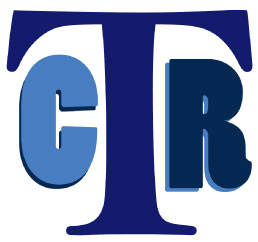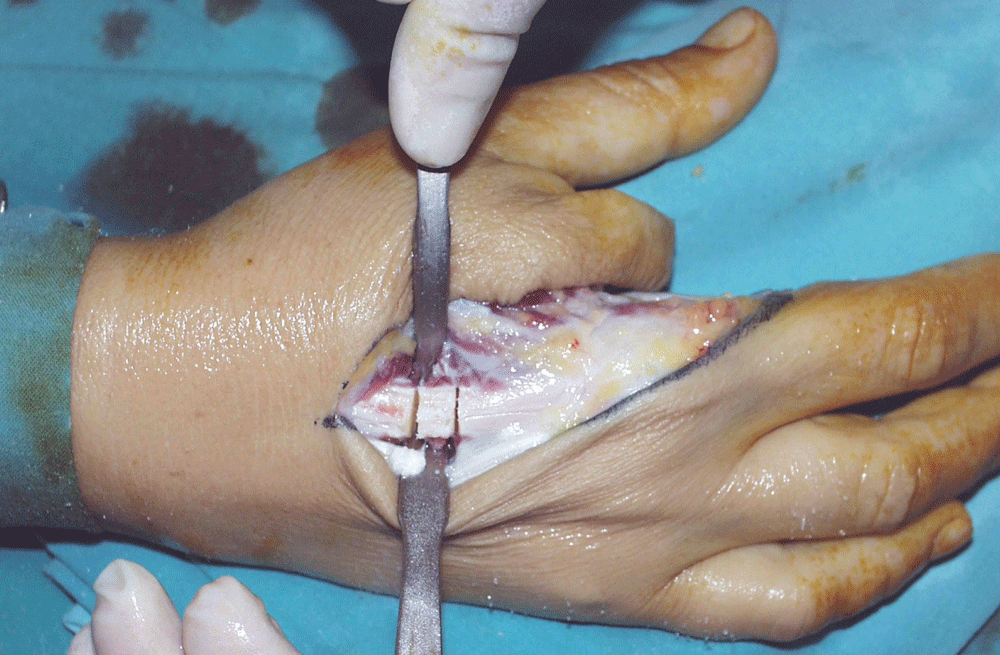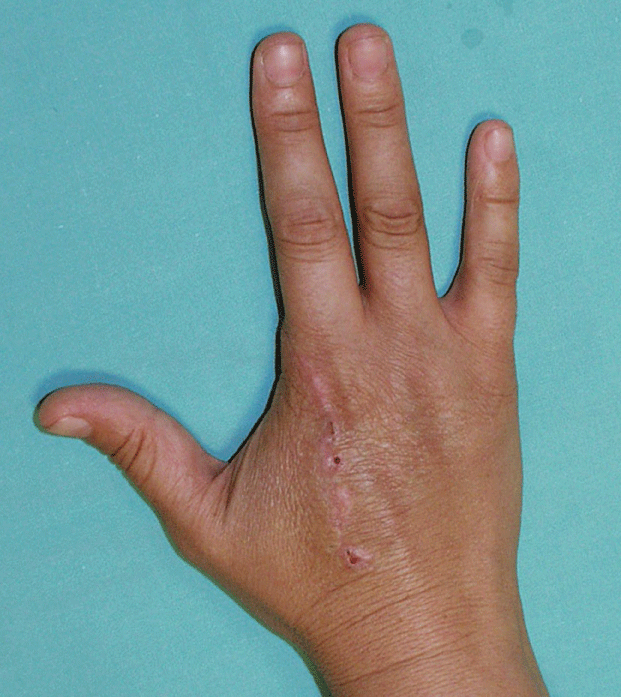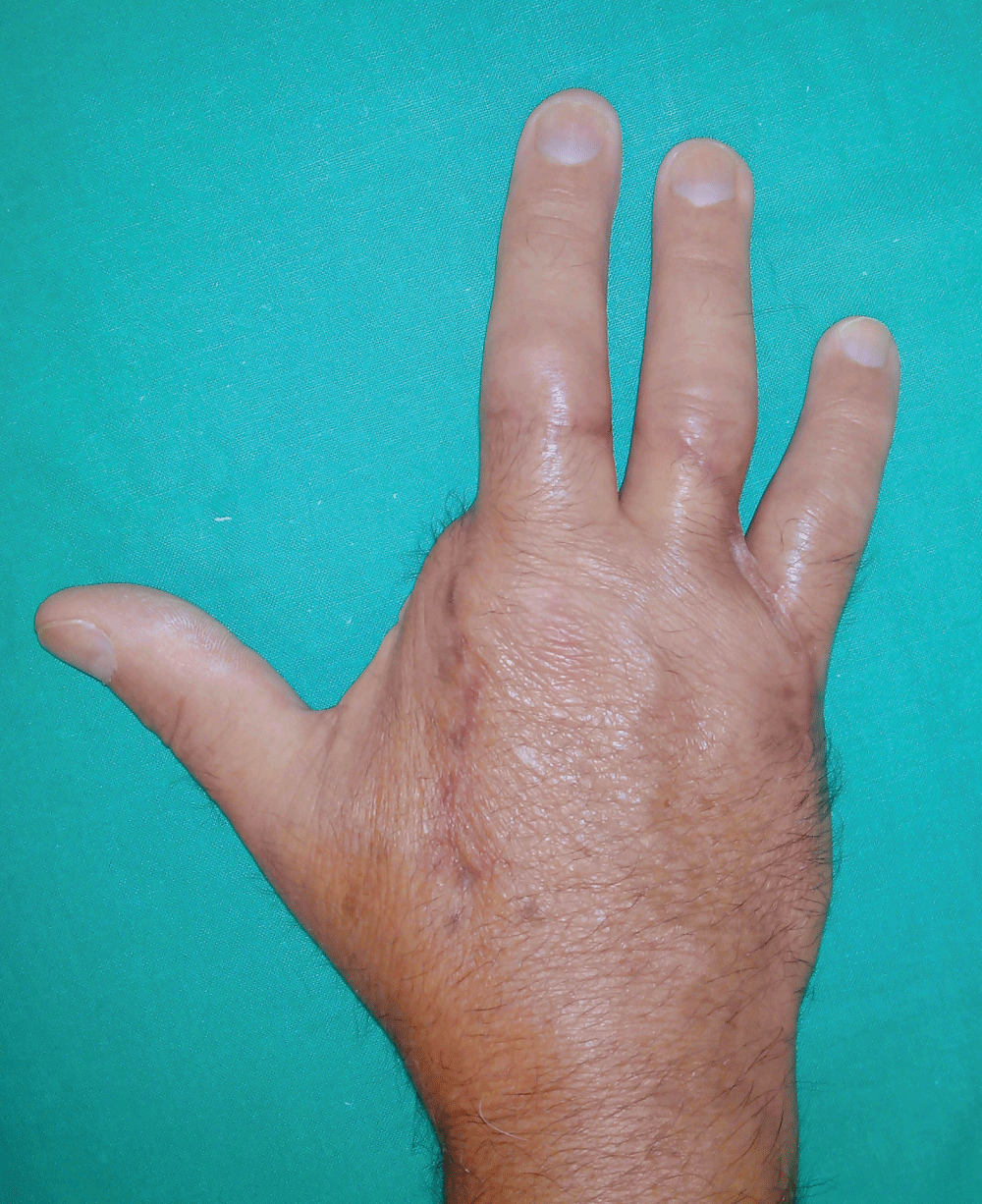Trauma Cases and Reviews
Third Metacarpal Shortening Osteotomy to Improve Hand Appearance after Index Ray Amputation
Pérez-García A1,2*, Cavadas PC1,2, Lorca-García C1,2, Thione A1,2 and Aranda F1,2
1Department of Plastic Surgery and Burns, Hospital Universitario y Politécnico La Fe, Spain
2Department of Plastic Surgery, Clinica Cavadas, Valencia, Spain
*Corresponding author: Alberto Pérez-García, Department of Plastic Surgery and Burns, Hospital Universitario y Politécnico La Fe, Valencia, Spain, E-mail: albertoperez@comv.es
Trauma Cases Rev, TCR-1-018, (Volume 1, Issue 4), Case Report; ISSN: 2469-5777
Received: October 09, 2015 | Accepted: November 30, 2015 | Published: December 02, 2015
Citation: Pérez-García A, Cavadas PC, Lorca-García C, Thione A, Aranda F (2015) Third Metacarpal Shortening Osteotomy to Improve Hand Appearance after Index Ray Amputation. Trauma Cases Rev 1:018. 10.23937/2469-5777/1510018
Copyright: © 2015 Pérez-García A, et al. This is an open-access article distributed under the terms of the Creative Commons Attribution License, which permits unrestricted use, distribution, and reproduction in any medium, provided the original author and source are credited.
Keywords
Amputation, Finger injuries, Metacarpus surgery, Esthetics
Ray amputation is a good option in failure or no possible replantation, or in cases of useless finger or stump. Index ray amputation poses a decrease in grip strength, but does not represent a major impairment to the usual activities because its role in precision and key pinch can be adopted by the third finger [1]. The cosmetic aspect is highly acceptable; however, after this procedure, the long finger loses its central position in the hand, which leads to a less natural appearance.
In order to improve the aesthetic outcome in index ray amputations, we reduce the length of the third metacarpal by a shortening osteotomy. A dorsal approach with a straight incision is performed, and the periosteum is elevated along the metacarpal. The osteotomy place is selected at the proximal portion of the diaphysis; a transverse section of bone is removed with a power saw, and the distal metacarpal is slided proximally and stabilized using a 2 mm plate (Figure 1).
From February 2008 to December 2012, nine patients with high aesthetic concerns underwent index ray amputation and third metacarpal shortening in our department. There were six females and three males. Bone healing was achieved in all cases. None major complications occurred postoperatively, but one patient presented long finger extensor lag of 15° compared with the other hand. Two patients required plate removal due to irritation. Eight patients felt comfortable with the aspect of the hand, and one was unsatisfied.
The hand is exposed to public view, is used to express emotion and ideas, and contributes significantly to self-image. For a long time in hand surgery, the functional result often has been greater consideration than the cosmetic result. However, even if the functional disturbance is minimal, if the cosmetic result is poor, the patient will not use the hand in public [2,3]. Therefore, attempts to optimize operative results must include providing an aesthetically acceptable appearance. Phalangeal lengthening could be an alternative, but it requires multiple surgical procedures [4].
Although no major complications were observed in our series, there is the potential for greater morbidity as nonunion, osteomyelitis or tendon adhesion/rupture. Hardware removal is sometimes required. Moreover, metacarpal shortening of more than 5-7 mm should be avoided, because it could produce loss of the fingertip flexion and metacarpophalangeal extensor lag [5]. We suggest to perform the osteotomy at the metacarpal base to diminish the risk of nonunion. With the aim of reducing immobilization, we employ titanium plates to fix the fracture, allowing the patient to move the hand early.
In our experience, third metacarpal shortening osteotomy is a good option in order to improve the appearance of a four-finger hand, with the longer finger in a central position (Figure 2 and Figure 3). Since there is some risk of complications, we believe that this procedure could be recommended only for patients with high aesthetic demands.
References
-
Murray JF, Carman W, MacKenzie JK (1977) Transmetacarpal amputation of the index finger: a clinical assessment of hand strength and complications. J Hand Surg Am 2: 471-481.
-
del Pinal F, Herrero F, García-Bernal FJ, Jado E, Ros MJ (2003) Minimizing impairment in laborers with finger losses distal to the proximal interphalangeal joint by second toe transfer. Plast Reconstr Surg 112: 1000-1011.
-
Zhao J, Tien HY, Abdullah S, Zhang Z (2010) Aesthetic refinements in second toe-to-thumb transfer surgery. Plast Reconstr Surg 126: 2052-2059.
-
Sawaizumi T, Ito H (2003) Lengthening of the amputation stumps of the distal phalanges using the modified Ilizarov method. J Hand Surg Am 28: 316-322.
-
Strauch RJ, Rosenwasser MP, Lunt JG (1998) Metacarpal shaft fractures: the effect of shortening on the extensor tendon mechanism. J Hand Surg Am 23: 519-523.








